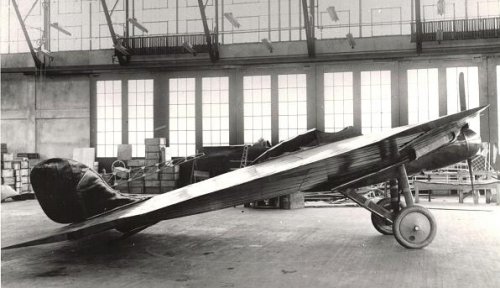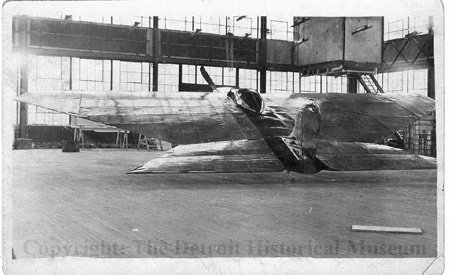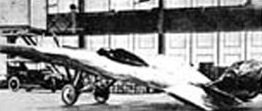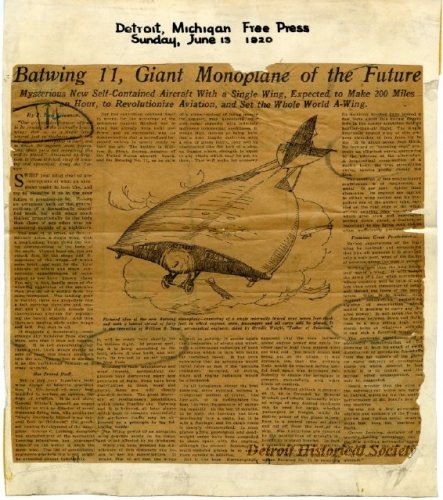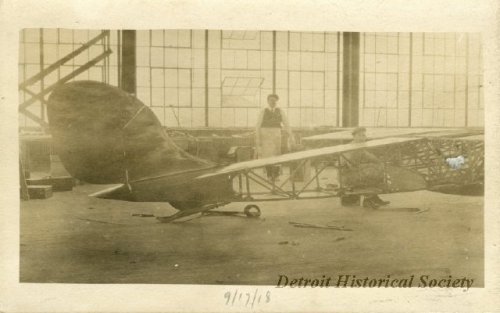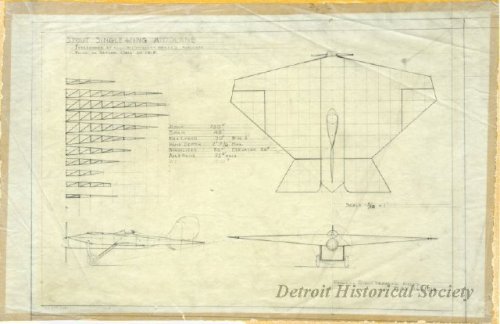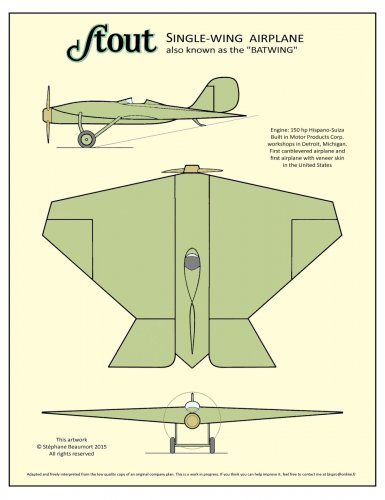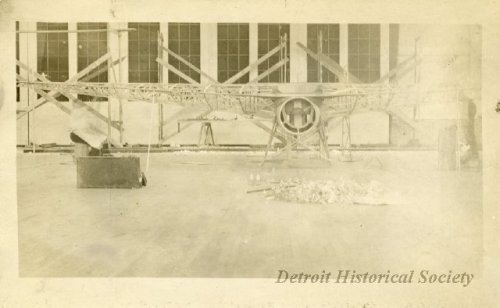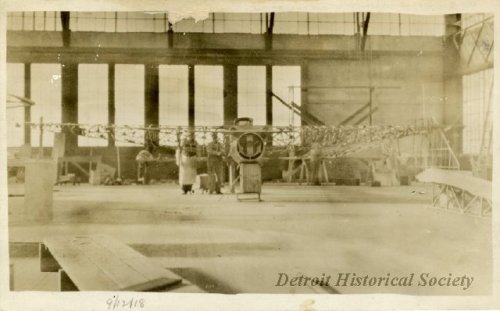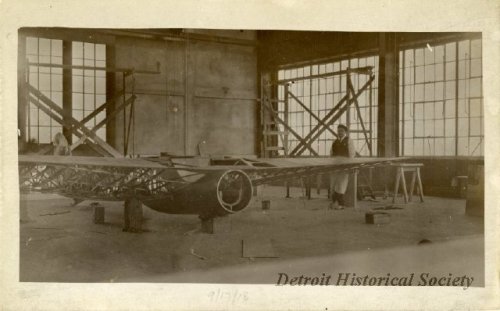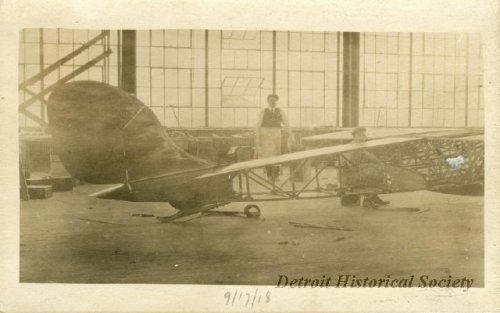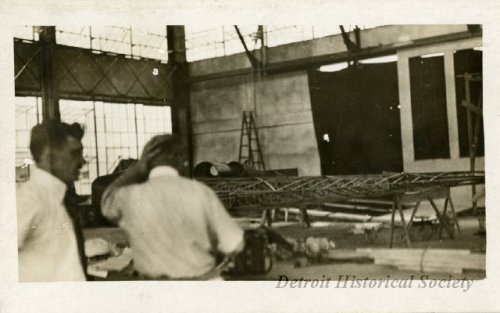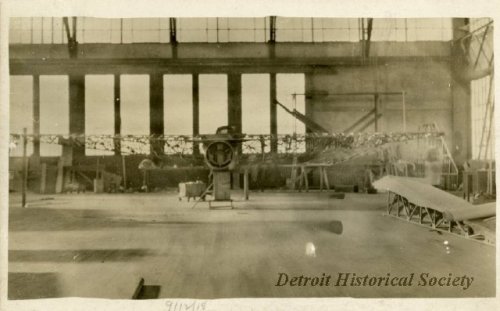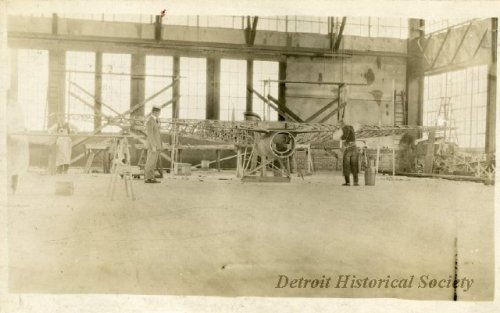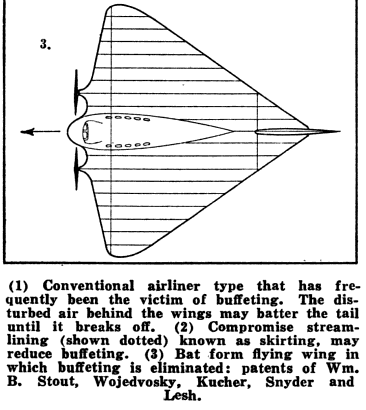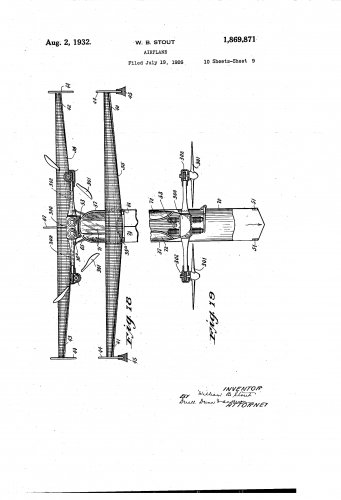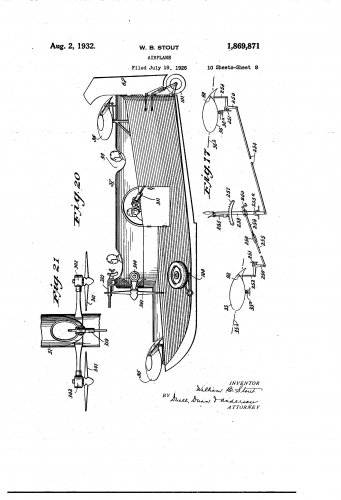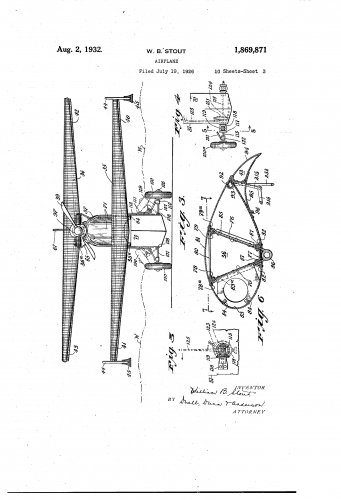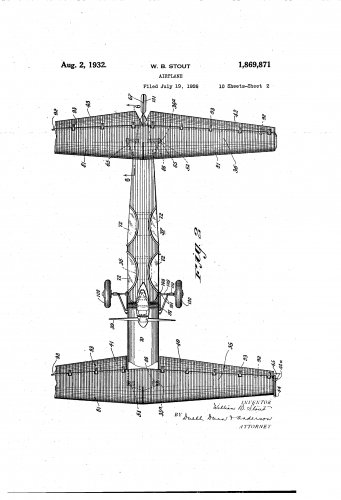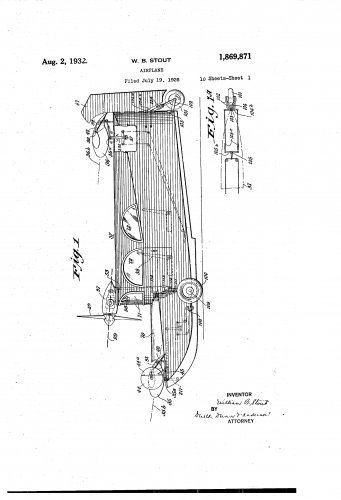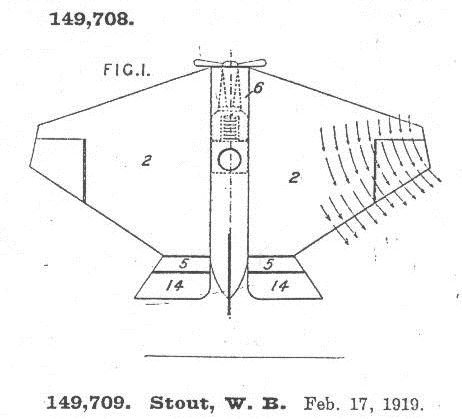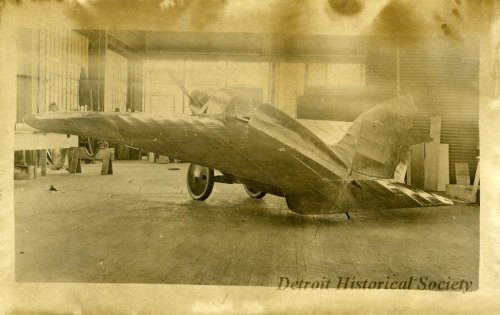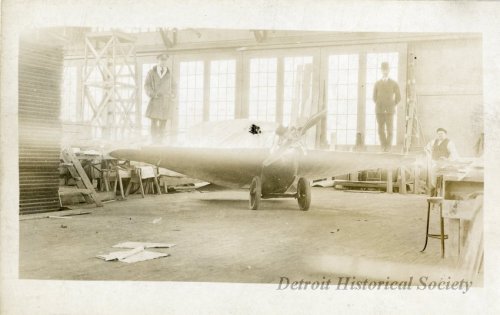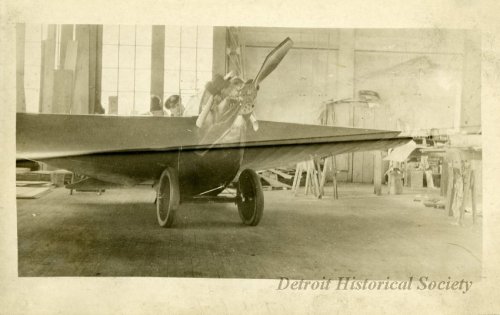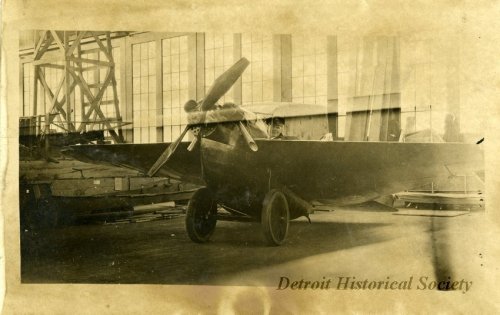You are using an out of date browser. It may not display this or other websites correctly.
You should upgrade or use an alternative browser.
You should upgrade or use an alternative browser.
Motor Products &William B. Stout Projects, Prototypes and Early Designs
- Thread starter hesham
- Start date
- Joined
- 25 June 2009
- Messages
- 14,754
- Reaction score
- 6,155
hesham said:we know the Motor Products built the W.B. Stout SX-6 as experimental fighter,or Stout
Experimental No.6,what was the earlier aircraft,from SX-1 to SX-5 ?.
Don't we already have Stout or Ford topics to ask the question in?
The SX-6 is the earliest Stout aircraft known.
It is not impossible that "SX" may have meant "Stout Experimental" but it's only a hypothesis. Even so, it doesn't mean that Stout's previous five experimental designs were aircraft at all.
- Joined
- 26 May 2006
- Messages
- 34,917
- Reaction score
- 15,791
Skyblazer said:The SX-6 is the earliest Stout aircraft known.
It is not impossible that "SX" may have meant "Stout Experimental" but it's only a hypothesis. Even so, it doesn't mean that Stout's previous five experimental designs were aircraft at all.
Hi Skyblazer,
are you sure about that ?,then why they didn't say SX-1 or No.1 ?.
- Joined
- 6 November 2010
- Messages
- 5,263
- Reaction score
- 5,517
No. Stéphane is offering the possibility SX-1 through SX-5 might have been designs for other things than aircraft. A design number of 6 simply leaves room for 5 earlier designs, but these might be designs for cars, agricultural machinery or furniture.hesham said:Hi Skyblazer,
are you sure about that ?
I do not know. Neither, apparently, do you. Or Stéphane.
Because, apparently, SX-6 wasn't the first design in that series.hesham said:... ,then why they didn't say SX-1 or No.1 ?.
- Joined
- 6 November 2010
- Messages
- 5,263
- Reaction score
- 5,517
I've had a look in "American Fighter: The Definitive Guide to American Fighter Aircraft from 1917 to the Present" by Enzo Angellucci and Peter M Bowers.
The SX-6 was built as the Motor Products SX-6 Stout Cootie.
From another site: http://www.earlyaviators.com/biostout.htm
The SX-6 was built as the Motor Products SX-6 Stout Cootie.
Of the many products which were developed in 1918, the SX-6 merits a mention; it was also known as the Stout Experimental No.6, or more succinctly, the Stout Cootie. The most interesting feature of this single-seat monoplane, only one of which was ever built and about which little is known since hardly any data has survived, was its delta wing. The designer was William B. Stout and his 1917 design was powered by a 150hp Hispano-Suiza engine, built under licence in the U.S.A. by Wright. Stout had called his creation the Stout Streamline Monoplane and it was delivered to the Air Service under the designation SX-6 in December, 1918, for evaluation but no orders ever materialized.
From another site: http://www.earlyaviators.com/biostout.htm
Stout designed a high-wing monoplane from which all struts, wires, and other wind obstructions had been eliminated. It was completely revolutionary in design and appearance, looking so much like the trench pests of the war it was immediately dubbed "Stout's Cootie." Jimmy Johnson was assigned to fly the weird-looking plane, and made several fairly successful flights in it. But in the opinion of the officers at McCook the ship did not hold much promise as a military craft and nothing further was done with it.
- Joined
- 25 June 2009
- Messages
- 14,754
- Reaction score
- 6,155
According to my own research the SX-6 and the Cootie were two different types.
The SX-6 was a 1918 single-seat monoplane with a 150hp Hisso A engine.
The Batwing (or Vampire Bat) was a 1918 all-wood single-seat shoulder-wing monoplane with a 150hp Hisso engine and inverted delta wing.
The Cootie was a 1919 single-seat mid-wing monoplane with a 38hp two-cycle Sperry-Wills and thick cantilever wing. It never flew.
It is not impossible that the Batwing could have been the SX-6 or a modification of it, given that they were made the same year and had the same engine.
It is even possible that the Cootie could have been the former SX-6 and Batwing, and that none of the three ever flew!
Of course there is very little information available on two of these prototypes, and in the absence of photographs we can only conjecture or repeat what others wrote... including mistakes!
The SX-6 was a 1918 single-seat monoplane with a 150hp Hisso A engine.
The Batwing (or Vampire Bat) was a 1918 all-wood single-seat shoulder-wing monoplane with a 150hp Hisso engine and inverted delta wing.
The Cootie was a 1919 single-seat mid-wing monoplane with a 38hp two-cycle Sperry-Wills and thick cantilever wing. It never flew.
It is not impossible that the Batwing could have been the SX-6 or a modification of it, given that they were made the same year and had the same engine.
It is even possible that the Cootie could have been the former SX-6 and Batwing, and that none of the three ever flew!
Of course there is very little information available on two of these prototypes, and in the absence of photographs we can only conjecture or repeat what others wrote... including mistakes!
Attachments
- Joined
- 25 June 2009
- Messages
- 14,754
- Reaction score
- 6,155
Three most valuable images from the archives of the Detroit Historical Society:
EDIT: I have found more pictures of the Batwing and a bit of information, so stay tuned!
- A 1918 plan of the "Stout Single-Wing Airplane" (the Batwing), showing what a visionary Stout was.
- A photo of the Batwing under construction.
- A 1920 newspaper clipping of the "Batwing 11" (most likely Batwing II) project for a "Giant Monoplane of the Future"...
EDIT: I have found more pictures of the Batwing and a bit of information, so stay tuned!
Attachments
- Joined
- 26 May 2006
- Messages
- 34,917
- Reaction score
- 15,791
Oh my God,
many great thanks to you my dear Skyblazer,and here is also the same name (Batwing),but
any relationship between them ?.
http://www.secretprojects.co.uk/forum/index.php/topic,24601.msg248140.html#msg248140
many great thanks to you my dear Skyblazer,and here is also the same name (Batwing),but
any relationship between them ?.
http://www.secretprojects.co.uk/forum/index.php/topic,24601.msg248140.html#msg248140
- Joined
- 25 June 2009
- Messages
- 14,754
- Reaction score
- 6,155
hesham said:Oh my God,
many great thanks to you my dear Skyblazer,and here is also the same name (Batwing),but
any relationship between them ?.
http://www.secretprojects.co.uk/forum/index.php/topic,24601.msg248140.html#msg248140
Fascinating! I hadn't seen that topic before but I have a very strong hunch that this "William Dinwiddie" was in fact just William Stout under an alias. That is so much like him to do that! Not to mention the fact that NO-ONE in the U. S. could design something quite as advanced and believable in 1918 as Stout.
So, yes... I'd say the two are completely related. I'll be doing some more digging to confirm that. Thanks a lot hesham for this beautiful (re-)discovery!
- Joined
- 25 June 2009
- Messages
- 14,754
- Reaction score
- 6,155
My first personal contribution to this topic is this redrawn plan of the Batwing, which Bill Stout built in 1918 in the workshops of the Motor Products Corporation in Detroit, Michigan. It is LIKELY that the Batwing and the SX-6 were just one and the same aircraft. Stout also built the Cootie in the same facilities in 1919 (more on this one later).

Attachments
- Joined
- 25 June 2009
- Messages
- 14,754
- Reaction score
- 6,155
Here is a set of photos showing the construction of the Batwing.
All-metal construction was still very unusual in 1918! Very early on, Bill Stout was convinced that the age of wooden aircraft was through, and explained that in the same way boats were no longer made of wood but of metal, airplanes would soon follow suit.
All-metal construction was still very unusual in 1918! Very early on, Bill Stout was convinced that the age of wooden aircraft was through, and explained that in the same way boats were no longer made of wood but of metal, airplanes would soon follow suit.
Attachments
- Joined
- 25 June 2009
- Messages
- 14,754
- Reaction score
- 6,155
The following photos show the Batwing after its completion.
Not only monoplanes were rare (biplanes had replaced them because they were supposedly less dangerous), but all-wing aircraft were almost unheard of, especially with the engine buried within the wing and fuselage reduced to a minimum!
Stout meant his revolutionary airplane as a pursuit. Imagine this! The end of the war, lack of purpose, endless supply of surplus aircraft and military disdain for such radical designs all thwarted Stout's plans before this amazing airplane ever had a chance to prove itself. The first low-wing monoplane in U.S. service was the Boeing P-26 "Peashooter", 15 years later...
All photos courtesy of the Detroit Historical Society.
Not only monoplanes were rare (biplanes had replaced them because they were supposedly less dangerous), but all-wing aircraft were almost unheard of, especially with the engine buried within the wing and fuselage reduced to a minimum!
Stout meant his revolutionary airplane as a pursuit. Imagine this! The end of the war, lack of purpose, endless supply of surplus aircraft and military disdain for such radical designs all thwarted Stout's plans before this amazing airplane ever had a chance to prove itself. The first low-wing monoplane in U.S. service was the Boeing P-26 "Peashooter", 15 years later...
All photos courtesy of the Detroit Historical Society.
Attachments
-
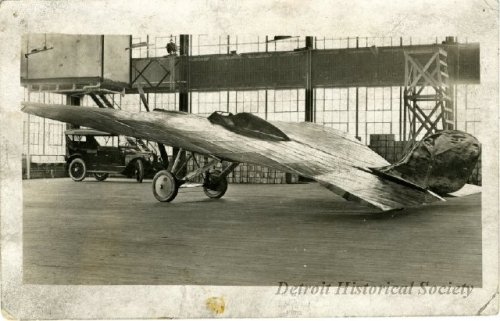 2014051058.JPG68.8 KB · Views: 89
2014051058.JPG68.8 KB · Views: 89 -
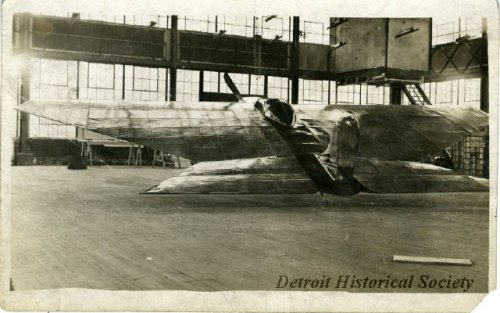 2014051056.JPG64.6 KB · Views: 79
2014051056.JPG64.6 KB · Views: 79 -
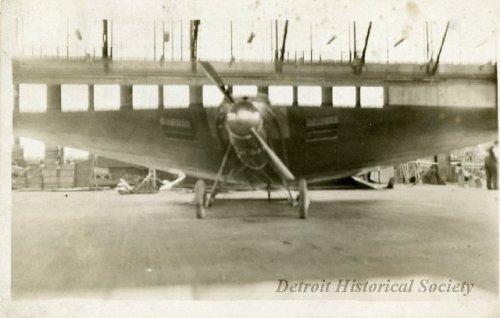 2014051055.JPG44.3 KB · Views: 79
2014051055.JPG44.3 KB · Views: 79 -
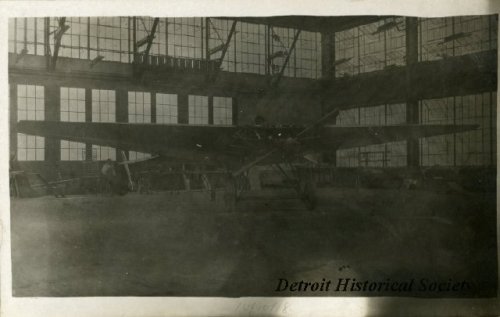 2014051054.JPG41.2 KB · Views: 69
2014051054.JPG41.2 KB · Views: 69 -
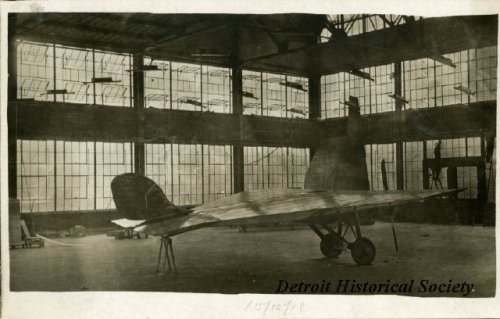 2014051053.JPG59.8 KB · Views: 76
2014051053.JPG59.8 KB · Views: 76 -
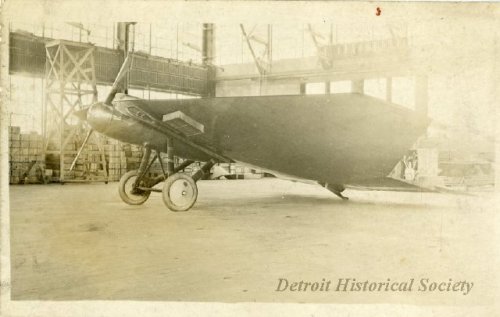 2014051052.JPG46.3 KB · Views: 75
2014051052.JPG46.3 KB · Views: 75 -
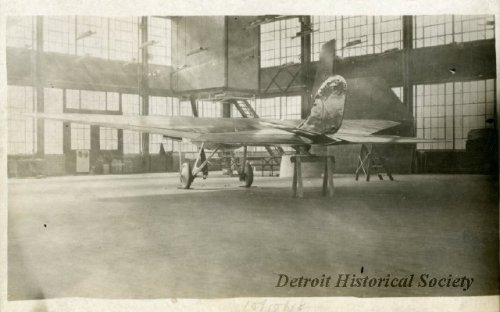 2014051051.JPG48.2 KB · Views: 69
2014051051.JPG48.2 KB · Views: 69 -
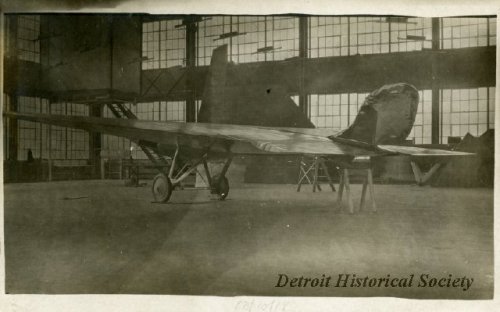 2014051050.JPG47.4 KB · Views: 68
2014051050.JPG47.4 KB · Views: 68 -
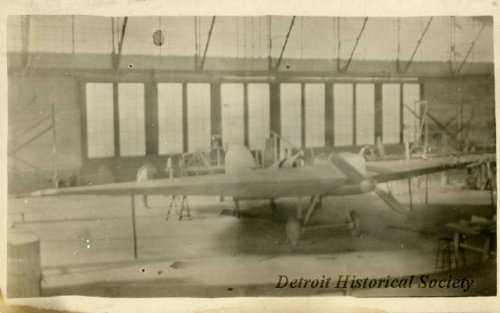 2014051047.JPG38.8 KB · Views: 65
2014051047.JPG38.8 KB · Views: 65
- Joined
- 25 June 2009
- Messages
- 14,754
- Reaction score
- 6,155
Glad you liked it. Going through various articles and stuff, I realize that, much more than all the reasons I previously listed, the one cause that comes up every time for the Batwing's dismissal seems to have been the extremely poor visibility for the pilot.
Here is Stout's own personal account of the aircraft's faults: "... the engine we had been furnished had a broken pump shaft and hence could attempt no serious flights... its ailerons were ineffective and the vision abominable." It was flown only once, at McCook Field, and that's where it got its nickname from, also according to Stout himself.
The commercial sedan Stout developed from the "Batwing" (often found as the "Batwing Limousine") was only marginally better. "The wing curve was poor in lift and the climb was bad. The pilot was enclosed and this was undesirable. The vision was not ideal" and (at least in its initial configuration) it had "poor lift".
More on this plane later. Meanwhile, here's a sketch by Stout of the Batwing's front section.
Here is Stout's own personal account of the aircraft's faults: "... the engine we had been furnished had a broken pump shaft and hence could attempt no serious flights... its ailerons were ineffective and the vision abominable." It was flown only once, at McCook Field, and that's where it got its nickname from, also according to Stout himself.
The commercial sedan Stout developed from the "Batwing" (often found as the "Batwing Limousine") was only marginally better. "The wing curve was poor in lift and the climb was bad. The pilot was enclosed and this was undesirable. The vision was not ideal" and (at least in its initial configuration) it had "poor lift".
More on this plane later. Meanwhile, here's a sketch by Stout of the Batwing's front section.
Attachments
- Joined
- 26 May 2006
- Messages
- 34,917
- Reaction score
- 15,791
Many thanks my dear Skyblazer,
and as you see with me,in Internet no much sites speaks about batwing design,only
in Wikipedia,you find some references,but hard to catch.
https://en.wikipedia.org/wiki/Stout_Batwing
and as you see with me,in Internet no much sites speaks about batwing design,only
in Wikipedia,you find some references,but hard to catch.
https://en.wikipedia.org/wiki/Stout_Batwing
Silencer1
That now I am the Ruler of the Queen's Navee!
- Joined
- 3 August 2009
- Messages
- 897
- Reaction score
- 582
Dear Skyblazer!
Thanks a lot for the pictures of Stout Batwings, as well as a story behind it.
I'm also greatly appreciated link to the Detroit' archive - there were a lot of Stout-related images here: aircraft, trains, buses, cars!
B)
Thanks a lot for the pictures of Stout Batwings, as well as a story behind it.
I'm also greatly appreciated link to the Detroit' archive - there were a lot of Stout-related images here: aircraft, trains, buses, cars!
B)
- Joined
- 25 June 2009
- Messages
- 14,754
- Reaction score
- 6,155
Silencer1 said:Dear Skyblazer!
Thanks a lot for the pictures of Stout Batwings, as well as a story behind it.
I'm also greatly appreciated link to the Detroit' archive - there were a lot of Stout-related images here: aircraft, trains, buses, cars!
B)
Absolutely. Stout was a visionary whose work is sadly undermined nowadays. On top of that, most people associate him with the Ford Trimotor, although he DIDN'T design that one at all! After a fire destroyed the facility where Stout's 2-AT and 3-AT types were stored, Ford sent Stout on a nationwide tour to promote the company's aviation operations, and during that time appointed a team led by Tom Towle and Otto Koppen to design the new Air Transport, the 4-AT. When Stout found out about it all when he returned...
There is still a lot that can be said about the Batwing... but I'd rather let Mr. Stout speak of it himself, and will share with you this most fascinating 8-page article entitled "The Modern Airplane and All-Metal Construction", published in the December 1922 issue of The Journal of the Society of Automotive Engineers. In this article, Stout not only describes his work on the "Batwing" and the later "Batwing Limousine", but also gives precise accounts of his design philosophy and even makes remarkable engineering statements that still hold true today. There is also a "Discussion" segment at the end of the article in which Com. H. C. Richardson, Harlan D. Fowler, H. M. Crane, Henry E. Bruno and Charles M. Manly comment on Stout's article and express their approval or disapproval of certain points. In perspective, Stout definitely comes out as the most visionary and sharpest thinker of the lot. Definitely must reading for anyone with an interest in the evolution of aviation design philosophy!
Sorry about the bad quality of the document, but it was reconstructed from small pieces and sized up for easier reading, so please bear with me!
Attachments
-
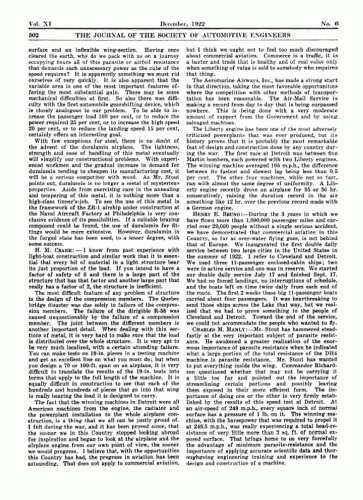 article p.502.gif263.2 KB · Views: 50
article p.502.gif263.2 KB · Views: 50 -
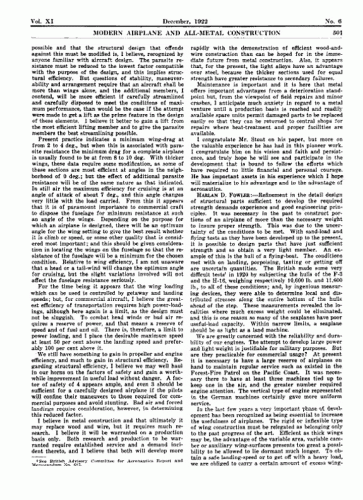 article p.501.gif255.5 KB · Views: 47
article p.501.gif255.5 KB · Views: 47 -
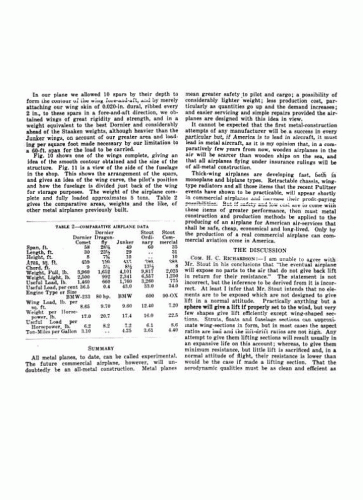 article p.500.gif203.1 KB · Views: 51
article p.500.gif203.1 KB · Views: 51 -
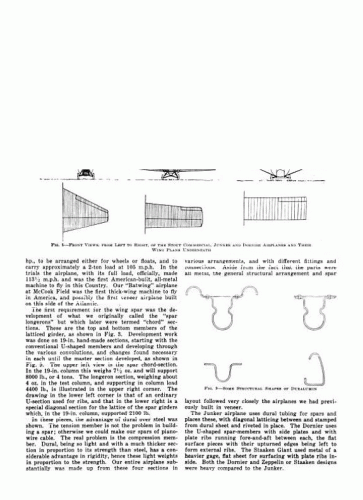 article p.499.gif170.9 KB · Views: 51
article p.499.gif170.9 KB · Views: 51 -
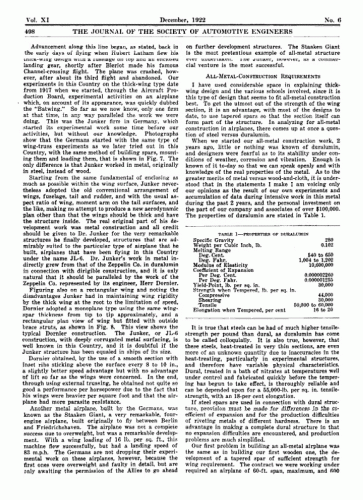 article p.498.gif261.1 KB · Views: 226
article p.498.gif261.1 KB · Views: 226 -
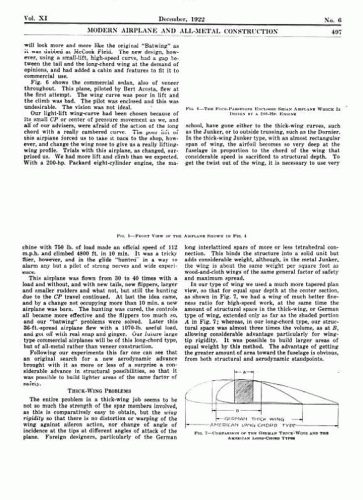 article p.497.gif238.4 KB · Views: 231
article p.497.gif238.4 KB · Views: 231 -
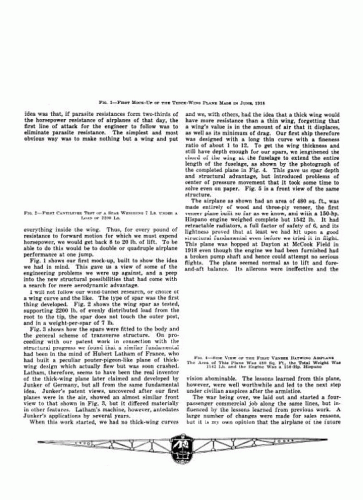 article p.496.gif212.1 KB · Views: 247
article p.496.gif212.1 KB · Views: 247 -
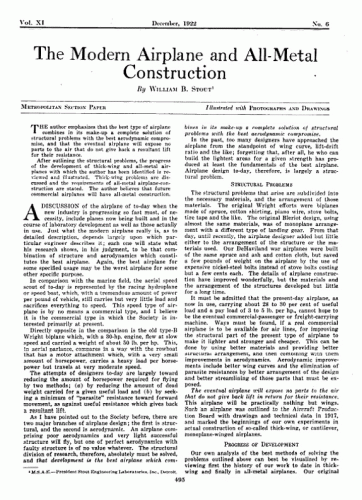 article p.495.gif220 KB · Views: 262
article p.495.gif220 KB · Views: 262
- Joined
- 26 May 2006
- Messages
- 34,917
- Reaction score
- 15,791
- Joined
- 19 October 2012
- Messages
- 1,984
- Reaction score
- 1,941
Retrofit
ACCESS: Top Secret
- Joined
- 21 February 2007
- Messages
- 656
- Reaction score
- 338
hesham said:Hi,
related to this bat-wing class,here is a Stout patent for the same concept,as a twin
engined medium transport airplane,page 367;
https://books.google.com.eg/books?id=nFnV9IG5040C&printsec=frontcover&hl=ar&source=gbs_ge_summary_r&cad=0#v=onepage&q&f=false
Hello Hesham, very interesting article from Lawrence Lesh, thanks!
The drawing seems not to be from a Stout patent but more a generic drawing made by Lesh to explain his theory. He also mentionned the Batwings patented by W. B. Stout, Wojedvosky (?), Kurcher (?), Snyder and himself.
Here-attached the Stout Patent n°149.709 dated Feb. 17, 1919.
Attachments
- Joined
- 27 December 2005
- Messages
- 17,752
- Reaction score
- 26,458
and here is the Cootie (The SX-6 mid-wing monoplane):
can that name stand for "cutie"?
Cootie = body louse. Not so cute now eh?
- Joined
- 19 October 2012
- Messages
- 1,984
- Reaction score
- 1,941
No worse than Pou-du-Ciel
Similar threads
-
-
Korean SX Flying Boat Aircraft and Projects of 1950s
- Started by hesham
- Replies: 12
-
-
Detroit ZMC-2 Metal-Skinned Airship (1929-1941)
- Started by Boxman
- Replies: 4
-

